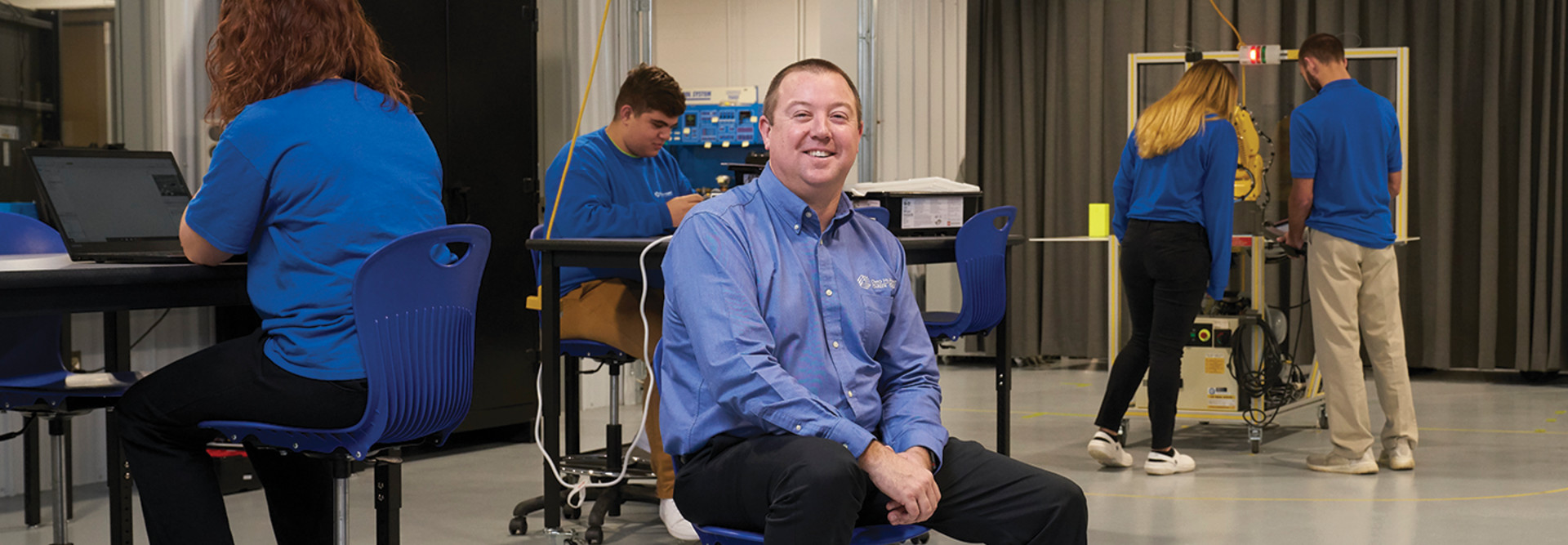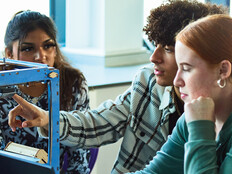Personalized Learning Must Be a Goal
Running CTE on the scale of Fairfax County Schools’ program requires a close relationship with the IT department, Downey says. That’s particularly true now that the district has issued Dell laptops to all high school students for the current school year. The IT department also operates an isolated LAN in some technology classrooms to keep those machines off the primary network when students are learning programming.
The ultimate goal, Downey says, is to produce well-rounded graduates who have had opportunities to explore pathways that interest them.
“For us, a win is that a kid either solidifies that ‘Yes, this is what I want to do,’ or they say, ‘No, not for me’ — and they haven’t spent a lot of postsecondary time and effort to train for something they will not be interested in,” Downey says.
Such personalized learning is also a goal for educators at the Ohio Hi-Point Career Center. They aim to help students “identify their E” — enrollment, employment or enlistment — Communications Director Kelsey Webb says. “Are you planning to head directly into your career? Are you looking to save money on college tuition and earn credits? Or are you looking for additional opportunities by enlisting in the military?”
The school, which serves students from 14 partner districts, has a 96 percent placement rate in those three areas, Webb says. Last year, Hi-Point students earned almost 700 industry credentials and over 400 college credits.
The center was established in 1974 in a Cold War–era Air Force property but uses modern approaches and technology to meet students’ needs. Hi-Point offers programs for adult learners, provides instruction for juniors and seniors on the main campus, and operates satellite programs across five counties, giving students as young as seventh grade chances to explore in-demand career paths.
To support the technology those programs require, the Hi-Point IT team relies on the latest 802.11ac Wave 2 wireless technology and runs access points on CAT 6A cabling to ensure each classroom has adequate bandwidth.
“We replaced most of our network switches with HPE Aruba switches and redundant 10-gigabyte fiber backbones between closets,” Technology Director John Case says, “and several years ago we virtualized all of our servers on VMware and Hewlett Packard Enterprise storage area network storage.”
Academics With Real-World Relevance
In Michigan, Traverse Bay Area Intermediate School District established its Career-Tech Center in 1976, offering CTE to juniors and seniors across five Michigan counties. TBAISD balances academics with more technical education, says Patrick Lamb, assistant superintendent of CTE and community outreach.
“We have academic teachers who meet the certification requirements from the state of Michigan that team teach with our technical teachers,” Lamb says. Students meet academic requirements in a way that makes the real-world relevance clear, and they’re exposed to a range of technologies. For example, TBAISD’s Manufacturing Technology Academy students work with tensile testers, robotic arms, plasma cutters and more, Teacher Tim Wheatley says.









